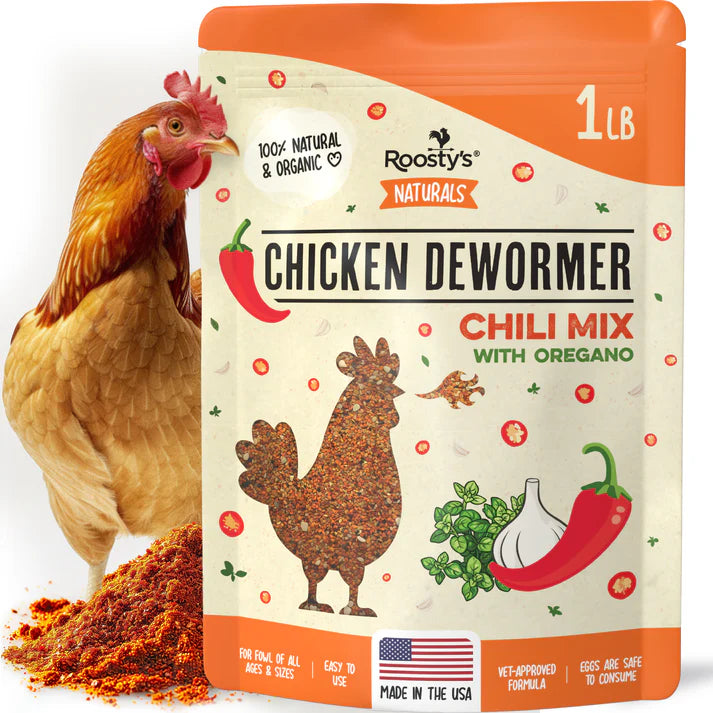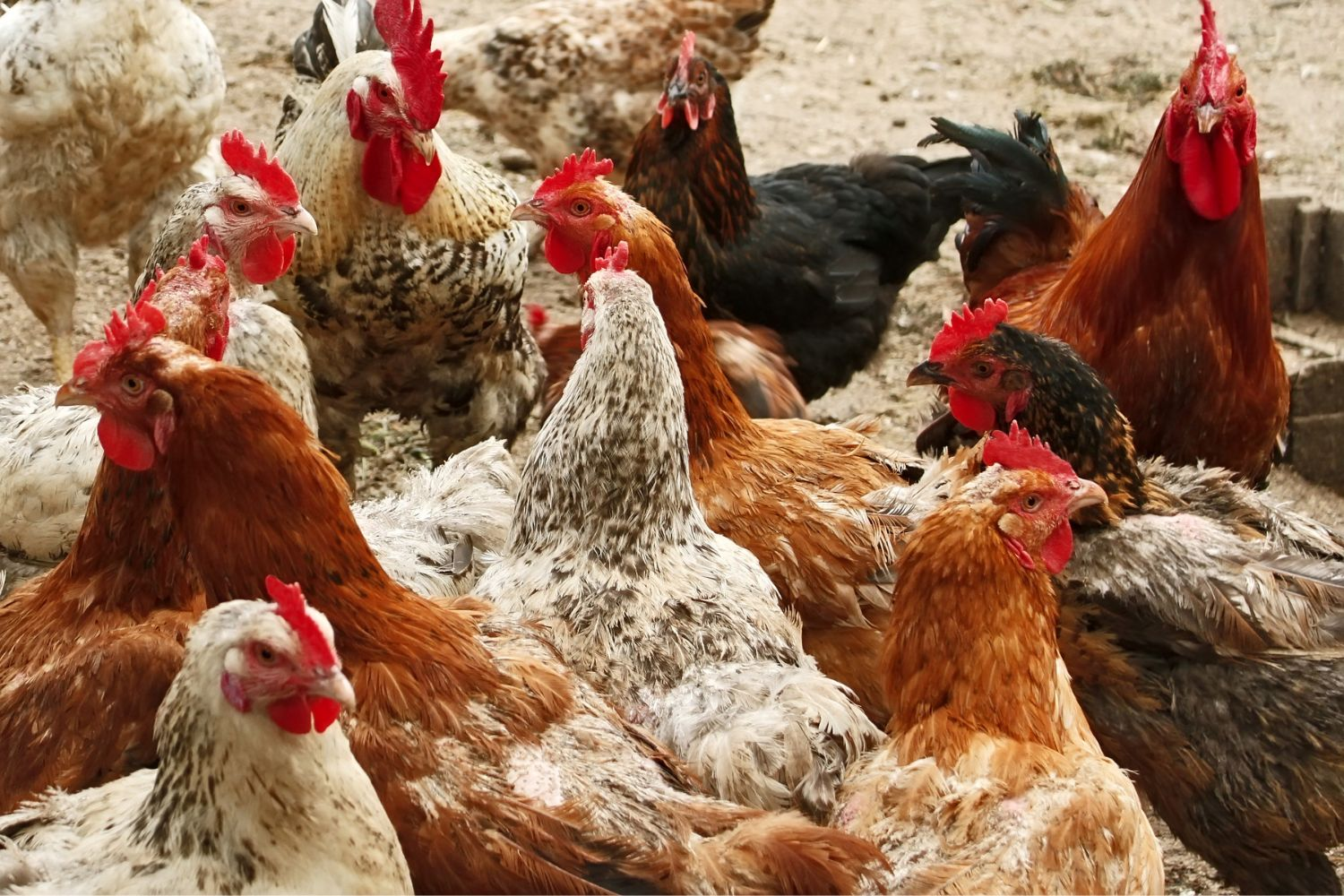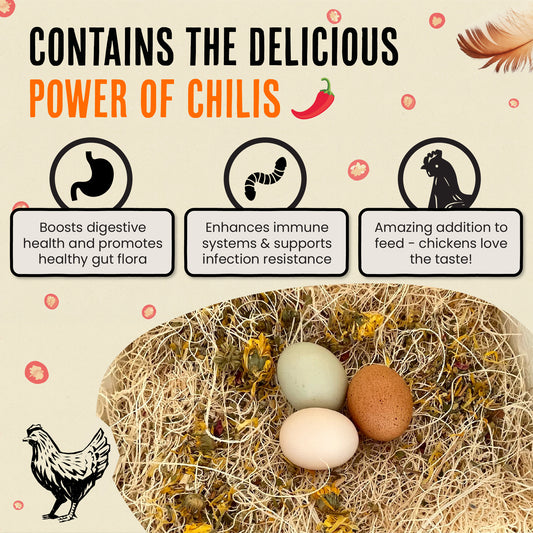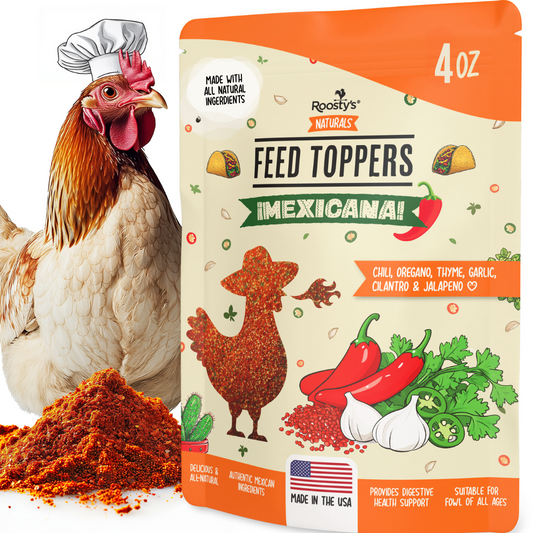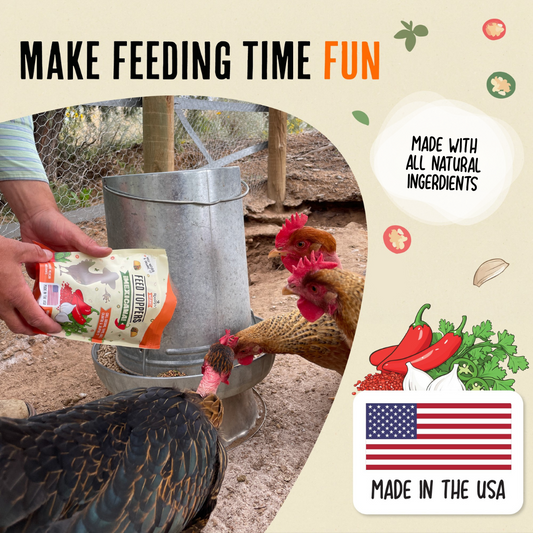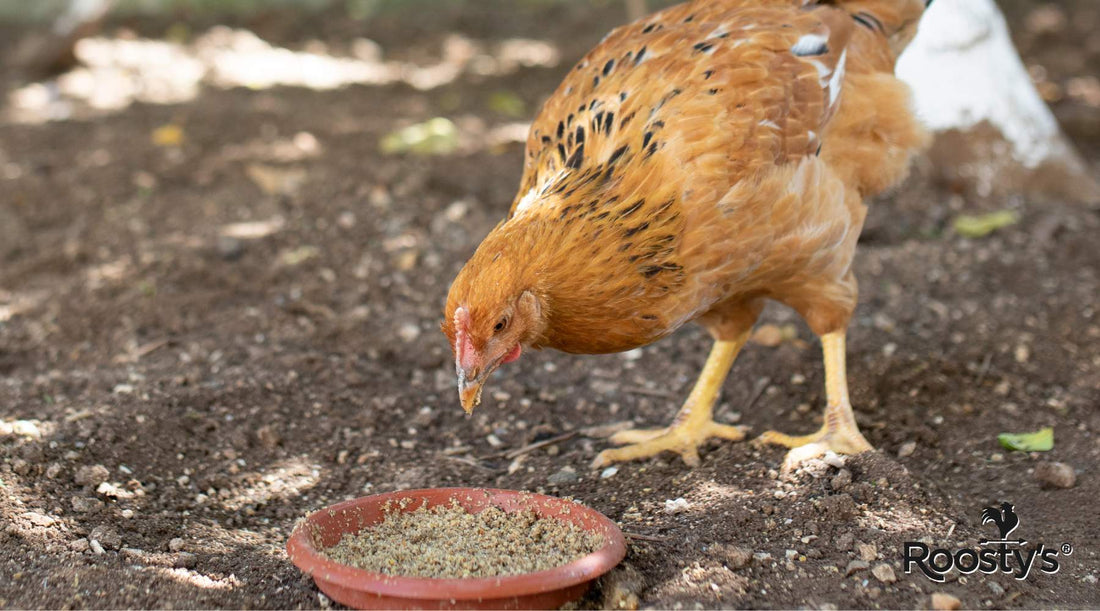
Ferment Chicken Feed: A Complete Guide on How to Do It Properly

Every chicken keeper wants the best for their flock. Providing a nutritious diet for your feathered friends is essential for optimum health and well-being.
There are myriad food products to choose from, but finding the right feed is not the only choice you’ll need to make. If you’re interested in nutrition, you might be wondering about the benefits of fermented chicken feed.
If you’re on the lookout for tips and tricks, or you’d like to know more about how to ferment chicken feed, you’ve come to the right place.
In this comprehensive guide, we’ll leave no stone unturned. Here’s everything you’ve ever wanted to know about the benefits of fermenting chicken feed.
Fermenting chicken feed: A beginner’s guide
Before we delve deeper into the advantages of adding fermented chicken feed to your hens’ diet, it’s important to understand what fermented chicken feed is and how to ferment food.
What is fermentation?
Fermentation is a chemical process, which breaks substances down into simpler products with the help of enzymes and microorganisms, causing them to release energy without oxygen.
If you took biology at school, you probably studied fermentation, focusing on experiments and processes involving yeast and bacteria. Fermenting food can unlock nutritional benefits.
In recent years, there’s been a huge amount of talk about the advantages of adding fermented foods to the human diet.
If you’ve read articles or seen news bulletins, you may have heard of ingredients and products, such as kimchi, kombucha, sauerkraut and kefir.
Just as fermenting foods can offer benefits for humans, fermented feed can boost nutrition for chickens.
Fermentation creates healthy probiotics while reducing pH levels and restricting the activity of harmful bacteria.
The process of fermenting chicken feed essentially involves soaking the feed to allow bacteria and other microorganisms to interact with starches and sugars within the food to supercharge digestion and improve gut health.
Lacto-fermentation
When you hear about fermented chicken feed, chicken keepers and animal health experts are usually talking about food products created by a process called lacto-fermentation.
Lacto-fermentation occurs when good bacteria, known as lactobacillus, interact with starches and sugars within the chicken feed to produce lactic acid bacteria. These bacteria create natural probiotics.
--------
Storing fermented chicken feed: Tips and tricks
One of the most important things to get right if you’re thinking about fermenting feed for your flock is storing fermented feed correctly.
It is essential to learn how to store fermented chicken feed to keep your birds in good health and ensure they get the best out of their new diet.
If you’re wondering how long fermented chicken feed lasts, or you have questions about where to keep your feed while it’s fermenting, here are some simple tips and tricks:
- Choose a suitable container: before you start the fermentation process, make sure you have a suitable container. Choose a plastic (BPA-free) container or use a glass jar or kitchen stoneware.
- Store your container in a dry, cool spot: during the fermentation process, keep your container out of direct sunlight. Choose a cool, dry spot within your kitchen or use a pantry or larder.
- Avoid high-traffic areas: try to avoid high-traffic areas. If your kitchen is the hub of the home, it’s best to leave your feed in the pantry while it is fermenting.
- Add cloth or a loose-fitting lid: you don’t want your container to be airtight while the feed is fermenting. A loose-fitting lid will be fine. If you don’t have a jar or container with a lid, you can use a piece of lightweight cloth.
- Drain the grain before serving: before you serve your hens a fermented feast, drain the grain to remove excess water. Keep the fermenting liquid for your next batch of feed.
- Consume within a few days: fermented chicken feed tends to spoil within 3-5 days. You may notice that there’s a strong sour odor. If the feed smells bad, don’t use it. It’s best to feed your chickens fermented food soon after you’ve finished the fermenting process. You shouldn’t need to refrigerate food unless your home is very warm.
How to make fermented chicken feed at home

If you’re sold on the brilliant benefits of fermenting food, or you fancy giving it a go, you can try it at home. Here’s a step-by-step guide to how to make fermented chicken feed at home:
- Find a container: the first step is to find a container. You can use a BPA-free plastic box, a glass jar or kitchen stoneware to hold the feed. You don’t need to use a container with a lid. If there is a lid, you want to leave it open slightly or loosen it rather than making the container airtight. If there’s no lid, simply cover the top of the vessel with a piece of cheesecloth or a similar breathable fabric.
- Add your feed: once you’ve chosen the type of feed you want to ferment, add it to your container. We usually recommend filling it to the halfway point.
- Add water: add water to your feed. Keep pouring until all of the feed is submerged.
- Cover the top: cover the top of the container with a piece of cloth or fabric, which will allow some airflow.
- Let the fermentation process work its magic: for the next 2-3 days, all you need to do is keep an eye on the container and top up the water level if it starts to fall and feed becomes exposed. It’s important that there is at least around an inch of water above the top of the feed. If there’s not enough water, mold can start to form.
- Look out for bubbles: after 2-3 days, you should start to notice small bubbles in your feed. This is a sign that you’re nearly there!
- Drain: when you can see bubbles, drain the feed to remove the water. Keep the liquid for the next batch.
- Feed your flock: the moment you’ve been waiting for has arrived! Get ready to tantalize the taste buds and feed your flock.
The science behind fermenting chicken feed
If you’ve started to research fermented chicken feed, or you’ve heard fellow chicken keepers or animal enthusiasts raving about the benefits of fermented feed, you might want to give it a try, but how does it work and why is it beneficial?
The science behind fermenting chicken feed gives a fascinating insight into why it’s so great for our feathered friends.
Fermentation is a natural process, which converts starches and sugars found in food into simpler products, such as acids and alcohol.
This process is undertaken by microorganisms, such as bacteria and yeast.
During fermentation, healthy bacteria known as probiotics form, pH levels fall and harmful bacteria become less active.
The main reasons people feed their chickens fermented feed include:
- Adding healthy probiotics to the chicken’s diet
- Lowering pH levels
- Reducing the activity of harmful bacteria
- Preserving other ingredients
Fermented chicken feed: Shelf life and safety
If you’re new to the world of fermentation, it’s natural to have questions. How do you store fermented chicken feed?
How long is fermented chicken feed good for? Is fermented chicken feed safe? In this section, we’ll aim to answer these common questions to enable you to nourish your flock safely.
- How long to ferment chicken feed? The fermentation process typically takes around 2-4 days. The exact time will depend on the volume of feed and the temperature in your home. You should start to notice bubbles after around 2-3 days. This is a positive indication that you’re almost there.
- How long does fermented chicken feed last? We recommend using your fermented chicken feed within a few days. Check the odor before you feed your hens. It should smell pleasant like sourdough bread.
- Is fermented chicken feed safe? Safety is a priority for every chicken keeper. If you’re switching your flock’s diet, it’s understandable to want to make sure that you’re making the right decision. Fermented chicken feed is safe and nutritious, provided that you follow the process correctly, keep adding water and serve your chickens at the right time. If you let the mixture dry out, there’s a pungent or unpleasant odor, or you feed your chickens food that was fermented weeks ago, there may be side effects.
- What should I look out for? Warning signs that your fermented feed may be past its best or potentially harmful include mold, a strong, unpleasant smell and a smell of alcohol. Throw the mixture away if you notice any of these signs.
--------
Unlocking the benefits of fermented chicken feed
Fermenting chicken feed provides a diverse range of benefits for hens and their owners. Here are some key benefits of fermented chicken feed to discover:
1. Enhanced nutrition and digestion
The most significant benefit of fermented chicken feed for most owners is enhanced nutrition and digestion.
Fermented feed not only softens the grain to make it easier to digest, but it also improves nutrient absorption. This is because soaking the feed limits the activity of phytic acid, a substance that can reduce absorption.
By adding fermented chicken feed to your flock’s diet, you can ensure they get more out of every meal in terms of nutritional benefits.
2. Boost immunity with probiotics
Probiotics boost immunity, improving the body’s ability to avoid and fight illnesses and infections.
Just as humans can enjoy the benefits of adding probiotics to their diets, so can chickens. Additional probiotics support higher levels of immunity and lower pH levels.
There is also some evidence to suggest that fermented chicken feed may reduce the risk of bacterial infections, which are associated with food poisoning.
3. Improved egg quality
Fermented foods don’t just offer health benefits for chickens. They also provide advantages for their keepers, including better-quality eggs.
A study published in the Journal of British Poultry Science shows that feeding chickens fermented foods can contribute to thicker eggshells and heavier, stiffer eggs. Improving the quality of the eggs also impacts taste.
Eggs laid by chickens on a fermented feed diet often have rich, golden yolks.
4. Save money while nourishing your feathered friends
The best thing about feeding chickens fermented foods is boosting their health and well-being, but it never hurts to save a bit of money.
By adding fermented chicken feed to their diet, you can not only nourish your flock, but you can also reduce the cost of feeding them.
Soaking grains and seeds causes them to expand to provide a healthy, filling meal. The result is that chickens eat less while enjoying better nutrition.
5. Variety
Eating the same thing day in, day out can get really boring. They say that variety is the spice of life. Why not add a little more vim and vigor to the menu at your hen house by including fermented chicken feed?
Choosing the best chicken feed for fermentation

Fermented chicken feed comes in many guises. It’s possible to ferment almost any kind of food that is traditionally given to chickens, but some foods may be more suitable for fermenting than others.
Here’s a guide to the best chicken feed to ferment:
Everyday chicken feed mixes
Most people add fermented food to their flock’s diet by using everyday chicken feed mixes, which contain grains and seeds.
You can use grain mixes, crumbles and pellets, but if you are using crumble or pellets, it’s beneficial to make sure you add some grains to make the mixture less sloppy and easier to drain.
Examples of grains you can add to the mixture ready for fermenting include barley, buckwheat and oats.
Legumes and seeds
Adding legumes and seeds to your feed can enhance flavor and nutritional value. Good examples include sunflower seeds, lentils, mung beans and pumpkin, chia and flax seeds.
Always ensure that you buy organic products, which are unsalted.
Fruit and vegetables
Fruit and vegetables add variety to the diet while boosting nutrition. You can use a wide range of ingredients from chopped apples and pears to sweetcorn and peas.
Avoid citrus fruits, as they tend to be too acidic, and remove pips and seeds before adding your produce to the mixture. If you are using harder vegetables, such as carrots, it’s worth chopping them very finely or grating them.
It’s fine to use frozen fruit and vegetables, but allow time for them to defrost before you start the fermentation process.
Herbs
If your feathered friends have a taste for the finer things in life, they’ll probably appreciate a sprinkling of fresh herbs on their lunch. Herbs add flavor and they’re also packed with goodness.
Add small quantities. You can also use edible weeds like dandelions and nettles. This is a great way to keep your garden in check while supercharging your chickens’ diets.
Fermenting chicken feed for broilers: A game-changer
Broilers are chickens that are raised specifically for producing meat. Broilers are raised to provide the best possible product for consumers. As such, nutrition is key.
Fermented chicken feed offers an array of benefits for all chickens, but enhancing nutrient absorption may be particularly beneficial for broilers from the perspective of chicken keepers, farmers and food manufacturers.
Research suggests that fermenting chicken feed for broilers can increase weight gain and feed conversion ratio.
A fermented diet was found to improve nutrient absorption and enrich probiotic content, which contribute to better growth and development.
For farmers and other individuals and organizations that raise broilers, there may also be financial implications.
Fermenting feed for broilers can help to encourage growth and improve nutrition while reducing the amount of feed required.
Fermented chicken feed FAQs
What is fermentation?
Fermentation is a natural chemical process, which breaks starches and sugars down.
It is done by bacteria and other microorganisms, such as yeast, and doesn’t require oxygen. The process usually takes around 2-3 days for chicken feed.
What are the benefits of fermented chicken feed?
Fermenting chicken feed benefits include adding probiotics to the diet, improving nutrient absorption and digestion, adding variety to your chickens’ menu and enhancing the quality of eggs.
What kinds of foods can I ferment?
You can ferment all kinds of foods for your flock, including everyday chicken feed and grain mixtures, legumes and seeds and fruit and vegetables.
Summary
Fermented food is well and truly under the spotlight, but it’s not just a subject of intrigue among humans looking to boost their health.
Fermented chicken feed is becoming increasingly popular, as chicken keepers look for effective ways to nourish their flocks.
Fermented feed enhances nutrient absorption, limits the activity of harmful bacteria and provides access to natural probiotics.
It’s easy to make fermented chicken feed at home and it can save you money in the long run, as the amount of feed required to provide a hearty, healthy meal will decrease on a fermented diet.
Key takeaways:
- Fermented chicken feed offers a host of benefits for hens and their owners: these include improved digestion and nutrient absorption, better quality eggs and the addition of probiotics
- You can make fermented chicken feed at home by following the simple steps in this guide
- You can ferment a wide range of foods for your chickens, including conventional grain and seed mixes, fruit and vegetables, herbs and legumes
--------
